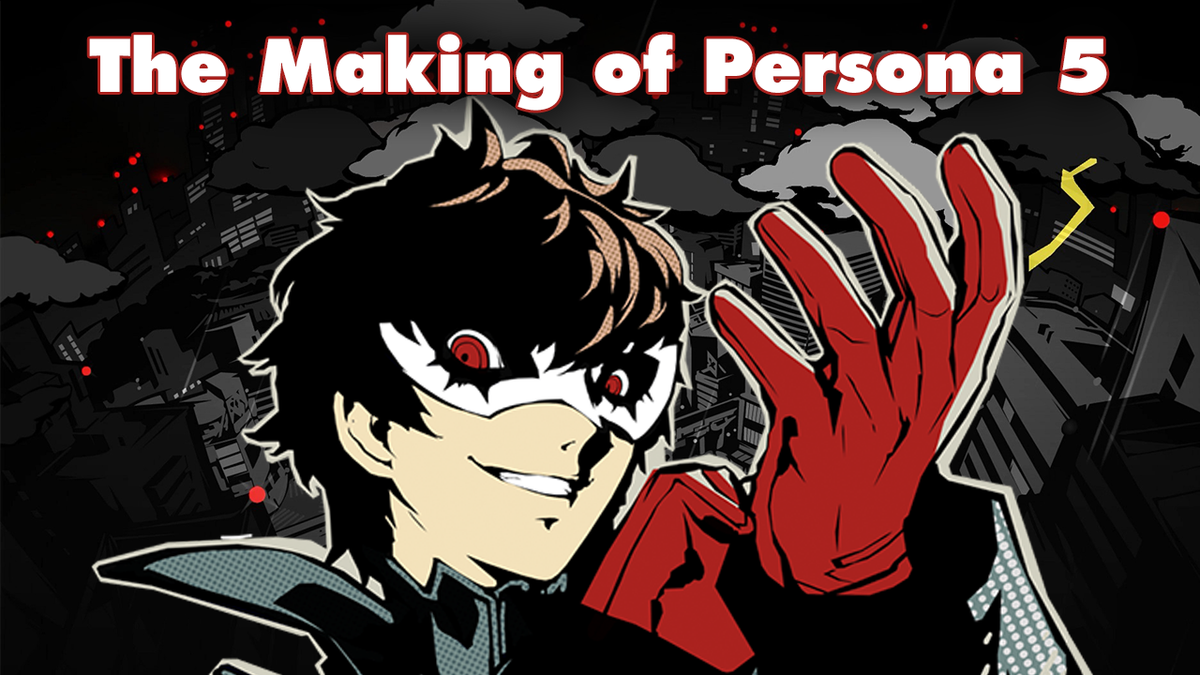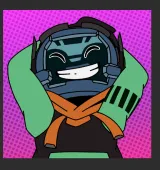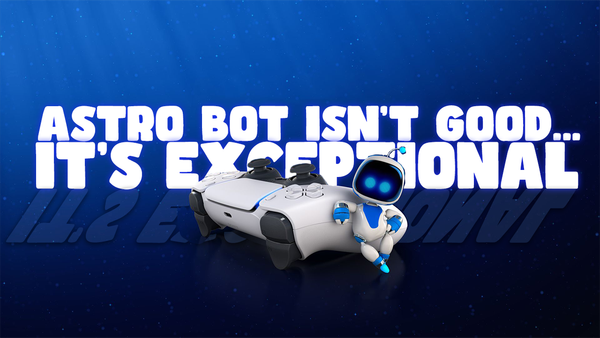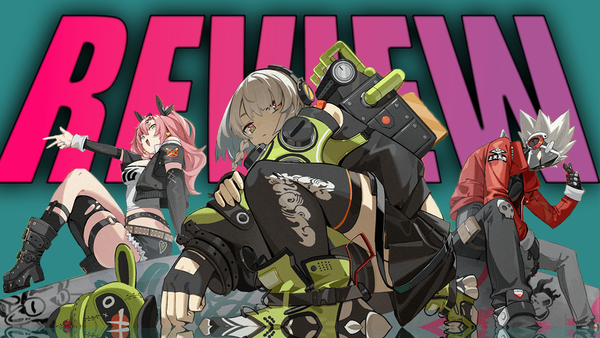The Making of Persona 5

Editor's Note: This is one of the first retrospective style of content that I worked on, and will be used and referenced in future Persona related content (which is planned).
The Early Development
Persona 5 was developed by P-Studio, an internal team at Atlus solely dedicated to handling the development of the edition to the Persona series. The game began development in 2008, fresh off the release of Persona 4, but the game would not start full development till around mid-2011 following the release of Catherine. Katsura Hashino, director for previous entries such as Persona 3 and 4, was fully involved in the development of Persona 5, and Catherine worked as the director for both projects. With Catherine, the studio began working with the Gamebryo engine, and the development of Catherine served as a testing ground for the development of Persona 5.
However, Persona 5 would be Hashiro's last game in the series as the leader of P-Studio as he would later separate to an internal team called Studio Zero. At the beginning of production, the team consisted of about 40 people. During the full production period, the game expanded to 70, with 15 people being planners, 15 being programmers, and 30 to 45 being designers. The roster included Naoya Maeda, who worked with Hashiro on the Trauma Center games. An early gameplay idea they had for Persona 5 was to change the traditional turn-based combat into more action combat, which ultimately didn't make it into the mainline game. But we'd later see a return for Persona 5 Scramble/Strikers. An early developer build also shows Joker living in an apartment with what appears to be the early concept art of Sae..


Initially, the team had the idea for Joker to live with Sae, who, on the pursuit to find the leader of the Phantom Thieves, while unsuspecting that she's living with him. But Hashino found this too cheesy of a storyline and decided to scrap the idea. An early art that has been found of an early concept design of Joker in a car with a character that never made it into the final game.

During the early period of Persona 5's development cycle, the concept art that has been presented or shown for certain characters, for example, some early artworks suggest that Makoto would have wielded a katana or Futaba's goggles originally were for Ann. One of the characters that looked drastically different in their concept stage as opposed to the final release was Morgana. Who was given a much more feminine look and was, in fact, a female.






Initially, during Catherine's development, P-Studio was using the Gamebyro engine, which they abandoned in favor of an internal engine that ended up being the engine for Persona 5's development. But initially, the team wanted a more realistic look for the characters in Persona 5. Some early images of how these characters looked surfaced with the character models.

The story for Persona 5 has also gone through many iterations as the story initially would see the Phantom Thieves travel around the world. But after the earthquakes in 2011 that took place in Tohoku. The directors decided that the narrative should focus more on Japan.
The Technological Leap
One major factor for the long wait for Persona 5 was the new internal engine used during development. In the popular Japanese magazine CGWORLD, a six-page feature on the visual production showed off early concept art and discussed the new internal engine.
The Game Engine
This new engine began development around early 2011 when Persona 5 went into full development. Atlus was creating an internal shader feature to allow for Shigenori Seojima (the artist behind Persona 3 and 4 and Catherine) to accomplish the toon manga look of Persona 5 and bring his art to life. The engine allowed lighting, posture shapes, and rim lighting to be used freely to convey the 2D style. Atlus also internally created an event scene creator. This feature allowed for mass production and easy switching of assets ON and OFF in any given scene.

Character Models
The Design team would render the average character model with around 10,000 Polygons. The game's main protagonist, Joker, is rendered at approximately 14,000 to 17,000 polygons. The complete modeling process consisted of completing the character design, then modeling the character. The character model has bones inserted, weight is adjusted, and the character is rigged and animated. The animations team developed working animations in parallel with the textures. Next, the shader settings and facial expressions began being developed. The model is then put through a verification process where it's tested and fine-tuned accordingly.

The Music - You'll never see it coming
The music for Persona 5 was composed by Shoji Meguro, who had been the series sound director since Shin Megami Tensei Nocturne. Meguro was given complete creative freedom with the soundtrack, and 80% of the soundtrack was composed by him. Seven tracks were performed in English by Jazz and soul singer Lyn Inaizumi. Lyn stated that the most challenging part was singing the rap segment of Wake up, Get up, Get out there. To express the game's mood, Meguro incorporated acid jazz elements into the score of the soundtrack to have the music match the themes and visuals of the game. Meguro also changed the flow of the songs in Persona 5 from the previous entries. Instead of opening and endings being a combination of tracks, Persona 5's soundtrack is, in concept, a continuous work.

Gameplay and Additional Features
Persona 5 would see the return of a gameplay system, first introduced in the Megami Tensei games, called the negotiation system. Due to the central themes, Persona 5's narrative was cantered, such as thievery. The team saw this as a necessary inclusion to resurrect. The now Negotiation system is what is now known as a Hold-up. Another returning feature from previous entries was the weather forecast system that gave days conditions spanning from rain, snow, and cloudy, to name a few. Persona 5 iterated on this system interesting by having the weather impact the Metaverse (dungeon crawling) aspect of Persona 5. Particular weather conditions provide different ailments and status effects to enemies. The weather can also offer better loot opportunities from enemies. Persona 5 would change the approach to dungeons compared to previous entries. The studio decided to have unique dungeons with a set layout and moved away from procedurally generated dungeons. The studio still kept the there traditional procedurally generated level design for the ever-expanding side dungeon Mementos.

One feature that nearly made it into Persona 5 that was a part of the previous entries was the Reversal Chain. The reversal system would have worked if you hadn't spent time with a confidant or made the wrong dialogue choices. Performing either action would result in a Social Link potentially becoming doubtful of the player and, until proven otherwise, halting all perks and benefits until the player rectifies the confidant's trust. Failing to prove yourself would break the social link chain causing the player to be unable to interact with that confidant for the remainder of the play-through.
The Cut Phantom Thief

Originally the confidant Hifumi was planned to be more than just a confidant but a Phantom Thief herself. With Makato as the brains Hifumi would operate as the strategist for the Phantom Thieves. Her arsenal of weapons would of consisted of a type of Japanese spear called a Yari and a sniper rifle as her ranged weapon. Her persona was also going to be Japanese themed but given Yusuke's was already Japanese themed the developers didn't want to have characters be to similar. Due to how lengthy the game was getting Hifumi being a Phantom Thief was eventually scrapped and a lot of the ideas for her character's role were combined into Makoto.
The Reveal
On June 25th, the first reveal came with some cut scenes and in-game footage of Persona 5. Atlus also promised that this game would release in 2015. But the game was later delayed till 2016.
https://www.youtube.com/watch?v=aunFHtmZaeIPersona 5 E3 2015 Reveal Trailer
The Reveal Trailer showed some areas of interest, and little subtle changes were absent in the final game. One of these changes is the rip-through effect during dialogue scenes. The background originally was red and showed the character's entire face, as opposed to the final game seeing around their eyes.

Atlus announced at the Tokyo Game show in 2015 that the release of Persona 5 had been delayed until 2016. In April 2016, Atlus released an official countdown for May 5th, called Take Tokyo Tower. Persona 5's release date was made official during this Take Tokyo Tower stream, and its release was slated for September 15th that same year.
The Release
With Persona 5 launching in Japan in September, fans of the series in the western regions would not see the game's release until February 14th, 2017, which ended up getting delayed to April 4th. Atlus also put forth guidelines for streaming the game. Content creators were able to stream the game up to a specific in-game date. Continuing to live stream further would cause strikes against the creator's channel. The idea was to prevent spoilers but was ultimately criticized by many content creators and communities. Within three weeks, Atlus adjusted the date that content creators could stream and apologized for coming across as threatening to the community.
Persona 5 was met with critical acclaim and has been revered as one of the best JRPGs to release in recent years. The game scored an aggregate of 93 on Metacritic. Later in 2017, Persona 5 was a nominee for the Game of the Year amongst Zelda: Breath of the Wild, Mario Odyssey, and Horizon Zero Dawn. With over 100+ hours worth of content, the Phantoms Thieves took the hearts of many. As of 2021, Persona 5 has sold over 5 million copies, and in 2019 and 2020 (depending on your region), Persona 5 would later see a definitive edition called Persona 5: Royal, which many consider one of the best JRPG experiences.

Persona 5: The Royal
Persona 5 Royal would expand upon the 100+ hour experience that the base game of Persona 5 offered, providing improvements in all aspects from additional content, characters, mini-games, and gameplay. The most obvious additions are the new characters providing an additional palace (dungeon) and a third semester that neatly wraps up and concludes the story along with new Social Links. The team added additional mini-games and areas in Tokyo to visit as hangout spots with your confidants, such as Kichijoji. The Baton Pass system was re-envisioned in the Royal edition, removing the Social Link requirement to perform the Baton Pass. Instead, the Baton Pass had levels of effectiveness that you could increase by playing Darts with party members in Kichijoji.

Other quality of life changes included gameplay elements such as technical attacks that would knock down enemies impacted by an ailment. Another refined aspect of combat was the ammo for gun attacks would reset each encounter rather than each time you entered the dungeon. The dungeons also had been improved with new areas accessible via Joker's new appliance, the grappling hook, which opened up new sections of existing palaces, previously inaccessible. With more space to explore, a new addition is the collectible Will Seeds which would incentivize players to explore each palace fully. The Royal added a hub area called the Thieves Den, which was accessible outside the game's story, where players could play card games with other in-game characters, look at art and listen to the game's soundtrack.
The game saw additions, with new songs added to the soundtrack for the Royal, particularly for the game's third semester. But most notably, the new battle theme, Take Over, plays when you get the advantage in battle and provides nice variation to music battle themes.
There were new finisher attacks in addition to All Out Attacks called Showtime attacks which would see two teammates perform a cinematic finisher on a given enemy. These are some of the most stylistic attacks in the game. So many fine little additions were overhauled in what was already a fantastic experience.

Conclusion
The wait for Persona 5 was long and spanned between two consoles, but it has become what is now Atlus best-selling game and has seen a variety of spin-offs. With 9 million copies sold between both Persona 5 and Persona 5: Royal, it is safe to say The Phantom Thieves have taken the hearts of the gaming community, and with Persona rece




